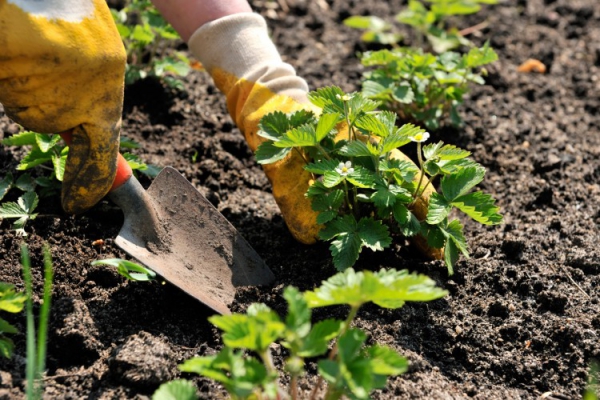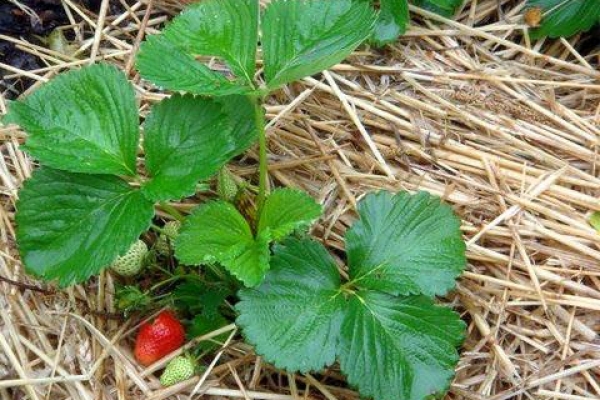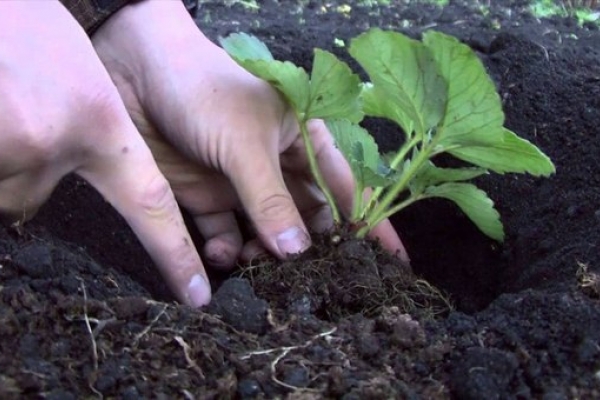Strawberry transplant technology in autumn
Content
What is the transplant for?
Each new year, the plants form a growth. It is characterized by the appearance of a peduncle, whiskers, leaves. Depending on the variety, one mother plant can form up to 35 whiskers. The peak yield of berries falls in the second year. By the fourth year of plant growth, the growth stops, which leads to a decrease in yield. Therefore, if you do not want to deprive your family and friends without juicy fragrant berries at the very peak of the season, the strawberries need to be transplanted to another place.
Best time to transplant
The main question that interests many gardeners is when to transplant strawberries. Some argue that this can be done both in spring (in April) and in autumn (in September), moreover, with equal success. But it is important to remember that for an autumn transplant, it is better to use young bushes that have formed over the summer from the whiskers of old plants. In the spring, you can transplant bushes that have grown over the winter from seeds in pots.
If you decide to transplant berries in the spring, then you need to do this only at the beginning of April.
But still, most gardeners say that autumn transplantation is a more traditional phenomenon for our climatic zone. Why? Moderate air temperature and high humidity on rainy autumn days have a beneficial effect on the survival rate of strawberries, as well as on rooting of the rosette. After all, it is these two factors that determine whether strawberries can survive the winter successfully or not. Therefore, when you choose the time for a transplant, remember that it is better to carry it out in September, and not in the spring. But this does not mean at all that you should rest in the summer. After all, preparations for the transplant must begin in August. The land should be completely dug up and all weeds should be removed. You also need to fertilize the piece of land where you plan to transplant the berries. Manure can be used as a fertilizer, at the rate of 5 kg per square meter, 20-25 grams of superphosphate and ammonium nitrate are also useful. At the beginning of autumn, you should deal directly with the preparation of the holes in which you transplant the plants. It is better to transplant strawberries to a new place in cloudy weather.
After all, it is these two factors that determine whether strawberries can survive the winter successfully or not. Therefore, when you choose the time for a transplant, remember that it is better to carry it out in September, and not in the spring. But this does not mean at all that you should rest in the summer. After all, preparations for the transplant must begin in August. The land should be completely dug up and all weeds should be removed. You also need to fertilize the piece of land where you plan to transplant the berries. Manure can be used as a fertilizer, at the rate of 5 kg per square meter, 20-25 grams of superphosphate and ammonium nitrate are also useful. At the beginning of autumn, you should deal directly with the preparation of the holes in which you transplant the plants. It is better to transplant strawberries to a new place in cloudy weather.
After what crops is it better to plant
Choosing the right place for transplanting strawberries in the fall is an important preparatory stage that you must take with full responsibility. The first and foremost factor that should influence your choice is predecessors. After nightshade crops (tomatoes, potatoes), it is better not to plant berries. The same applies to cucumbers, as well as cabbage, because these plants suck out all the useful elements from the soil, so the strawberries will simply not be left with anything good after them. Remember also that these crops have common pests with the berries. The best option is to plant berries after legumes, grains or onions. In addition, if there are leaves from beans and peas on the site, do not rush to remove them.After all, it can be used to make an excellent straw mattress for strawberry bushes.
When choosing a site, you must remember that it must have a slope (2-3 degrees). Indeed, on flat areas in the spring, pits-saucers can form, which will be flooded during heavy rains. It is great if the site is protected from the cold wind in winter, then a lot of snow will remain on it. The groundwater level should be low.
Transplant technology
When starting a transplant, the first step is to select the right plants. If three years have passed since the planting of the bush, then it will no longer suit us for transplanting, since the result from this will be zero. Biennial plants are in their prime, so the efficiency of their transplant will be maximum. Too young plants that grow in your garden for no more than a year will not work for us either. Although you can use annual plants that you grew from the first whiskers for transplanting. Therefore, mustache propagation of berries is one of the most affordable and simplest methods. Everyone knows that mustaches appear on the bushes, on which rosettes are formed. First, they take all the nutrients from the mother plant, but when 4 to 6 leaves appear on the outlet, it can be safely separated from the bush and planted in a new place. It should be emphasized that the strongest rosettes are the first two from the mother bush. Consider this if you propagate berries with a mustache.
Before planting, it is better to cut the leaves, leaving only a couple of leaves in the very center of the outlet. So you can reduce the area of evaporation of water from the bushes, as well as contribute to the successful rooting of seedlings. When you start planting, remember to pinch the roots one-fourth. Then you should dip them in fertilizers.
It is necessary to plant strawberries in rows. The distance between the bushes should be about thirty centimeters. In this case, remember that the root collar must be placed at soil level when planting. Do not bury the seedling too far into the ground, but the roots should not remain on the surface. Therefore, carefully spread them out in the landing hole. After all this, do not forget to thoroughly water the soil with peat. Sawdust can also be used instead.
If you are planting strawberries with a weak root system, then the roots can be pre-treated with a growth stimulant. Therefore, when you start transplanting strawberries, take a close look at your seedlings. It is better to show extra prudence and do everything right than to lose it later in the season without tasty berries.
Video "How to transplant strawberries correctly"
The recording shows how to care for strawberry bushes, how to transplant it and how to fertilize it.
